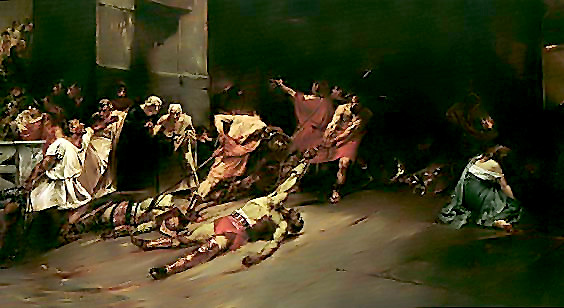Facts About Spoliarium
The "Spoliarium" is an iconic painting by Filipino artist Juan Luna, completed in just eight months. This compelling canvas depicts dying gladiators in a Roman circus, stripped of their weapons and clothing. Luna's mastery earned him the first gold medal at the 1884 Exposición Nacional de Bellas Artes in Madrid.
In 1886, the painting was sold to the Diputación Provincial de Barcelona for 20,000 pesetas. Today, it proudly hangs in the National Museum of Fine Arts in Manila and is celebrated as the largest painting in the Philippines, measuring an impressive 4.22 meters by 7.675 meters.
Historian Ambeth Ocampo has emphasized the significance of Luna's success, along with that of fellow Filipino artist Félix Resurrección Hidalgo, at the Madrid Exposition. Their achievements showcased the remarkable artistic talent of Filipinos on an international stage. At a gathering in Madrid, the national hero José Rizal praised their accomplishments, highlighting the importance of racial equality their recognition symbolized.
Inspired by the "Spoliarium" Rizal felt a profound motivation to contribute to his country, which led him to write his seminal novel "Noli Me Tangere." The painting, after being sold to Barcelona in 1886, suffered damage during the Spanish Civil War. It was later restored in Madrid and, in 1958, gifted to the Philippines by Generalissimo Francisco Franco.
Over the years, the "Spoliarium" has undergone several restoration efforts to preserve its condition. Artists like Antonio Dumlao and June Poticar Dalisay have played significant roles in its conservation. Today, the "Spoliarium" stands as a powerful symbol of Filipino artistry and national pride.
